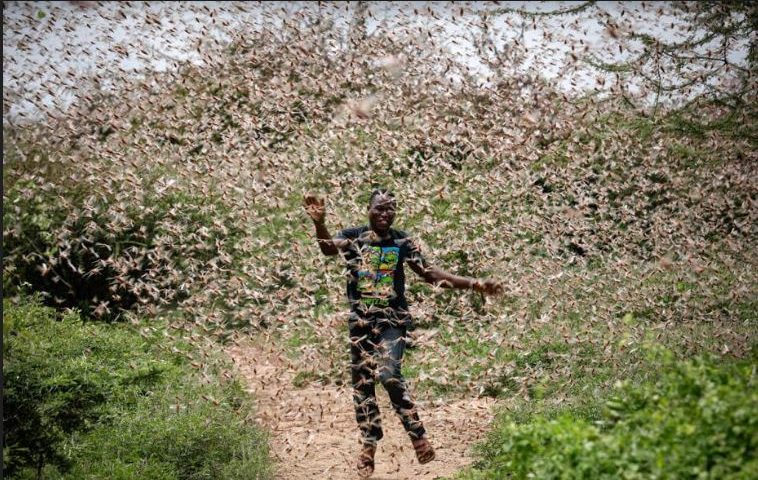By Spy Uganda
Kampala: Close to five million people in East Africa could be at risk of famine and hunger as the ‘worst locust invasion in a generation’ continues to destroy crops, contaminate water sources and displace thousands of households, a new report has warned.
READ ALSO: World Bank Group Grants Uganda $48M Emergency Fund To Curb Threat Posed By Desert Locusts
The infestation, which first appeared in the region last June and has already passed through a number of generation cycles, is feeding on hundreds of thousands of hectares of crops across at least eight countries, compounding an already dire food situation heightened by disruption from the Covid-19 pandemic and flooding.
As the most serious desert locust outbreak seen in East Africa in 70 years, an estimated tenth of the world’s population could be affected, according to the International Rescue Committee (IRC), a global humanitarian and aid group. A total of 4.9 million people could be plunged into crisis-level food insecurity, the IRC added.
READ ALSO: ‘Locusts Are A Punishment From God Because Of Uganda’s Sins’-Alenyo
The outbreak is hitting Somalia the hardest, with Kenya, Ethiopia, Uganda and South Sudan also heavily impacted.
Barri Shorey, senior director of economic recovery for the IRC, said: “The Desert Locust is the world’s most dangerous migratory pest.
“The worst outbreak in 70 years is combined with a year of drought and flooding, and now a Covid-19 pandemic preventing people from working and farming poses an unprecedented risk to food security.
“Without an immediate increase of prevention measures, we could be on the verge of a famine like we have never seen before.”
A swarm of locusts just more than a third of a square mile can eat the same amount of food in one day as 35,000 people. The insects can travel about 90 miles a day and eat their own body weight in crops.
In Somalia, which is still recovering from drought and massive flooding, more than half of the IRC’s supported communities have been affected by the latest infestation. Without immediate intervention, 3.5 million people in the country are expected to face a food crisis and 50-70 per cent of cereal harvests could be lost.
READ ALSO: Russia Donates Trucks To Uganda To Help In Fight Against Locusts
Sahal Farah, community resilience committee vice chairman for Docol, an IRC partner organisation, said: “This is the worst locust invasion we have seen in our generation; it has destroyed pastures, contaminated water sources and displaced many pastoral households.
“The worst part is that we do not have the capacity to control it, and so far, we have not received any external support.”
Last month, the UN Food and Agriculture Organisation said significant gains had been made against locust encroachment in East Africa, with an estimated 720,000 tonnes of cereal saved from the swarms of migratory pests across 10 countries: enough to feed five million people a year.
However, agency chief Qu Dongyu stressed that more action is still needed to avert a food security crisis. “Our gains have been significant, but the battle is long and is not yet over”, he said. “More people are at risk of losing their livelihoods and worsening food security in the coming months.”





